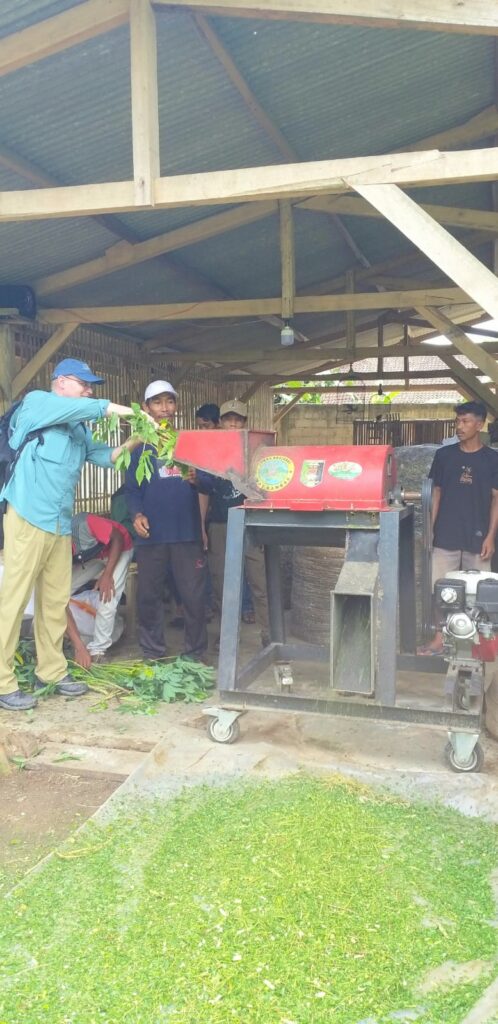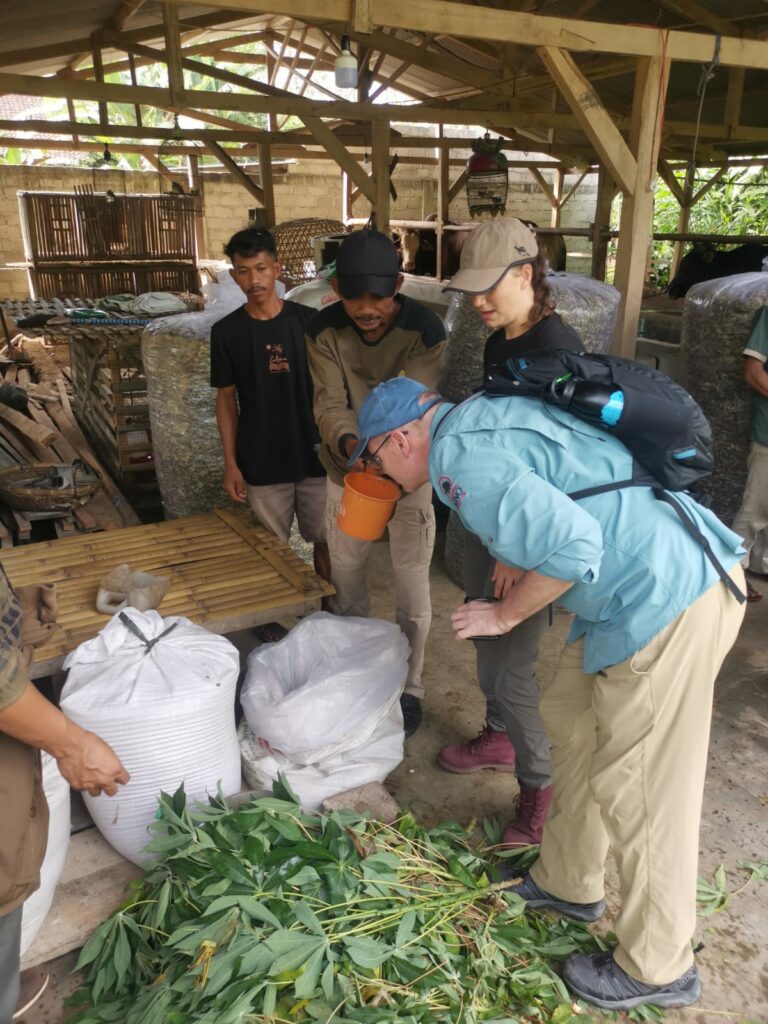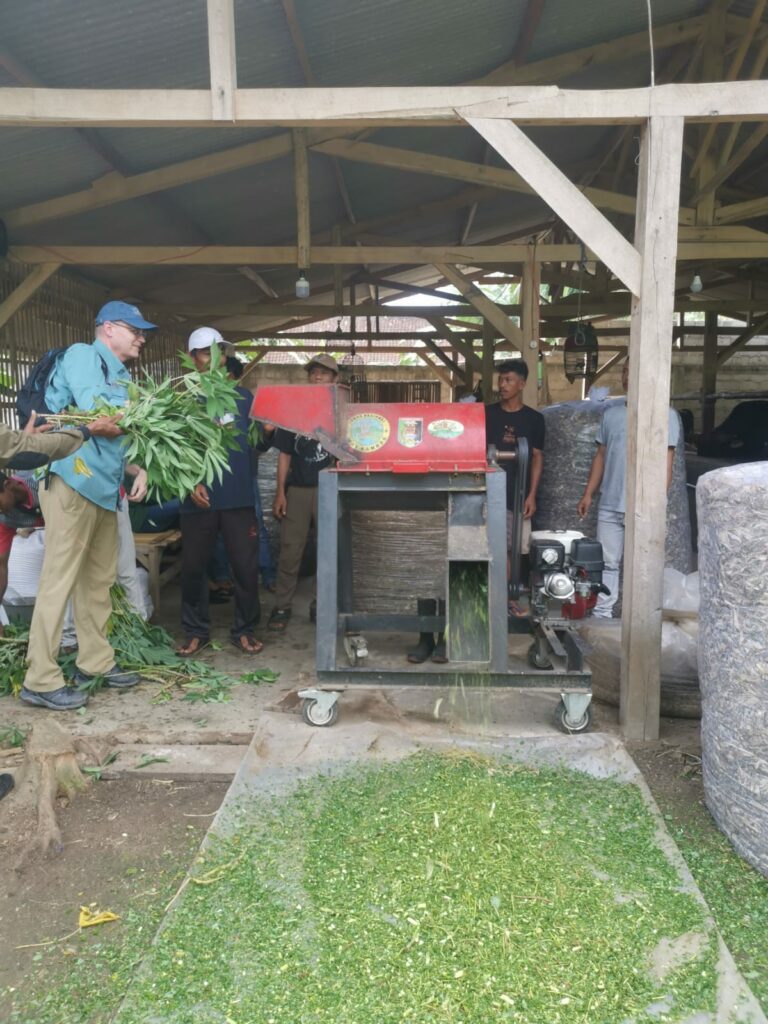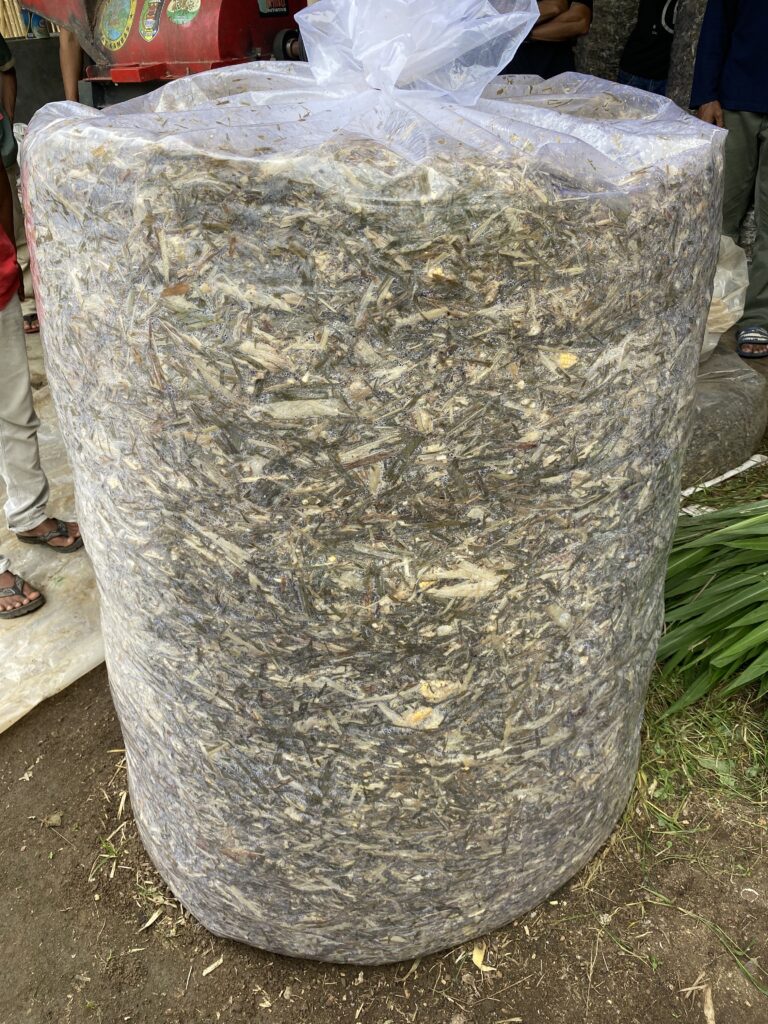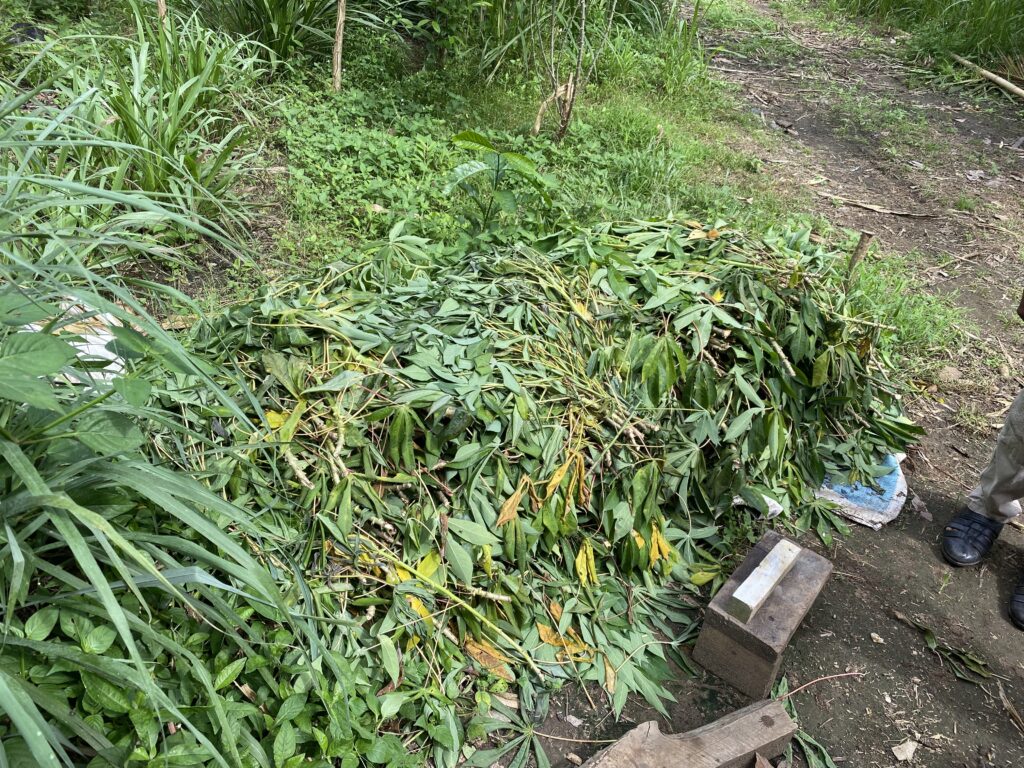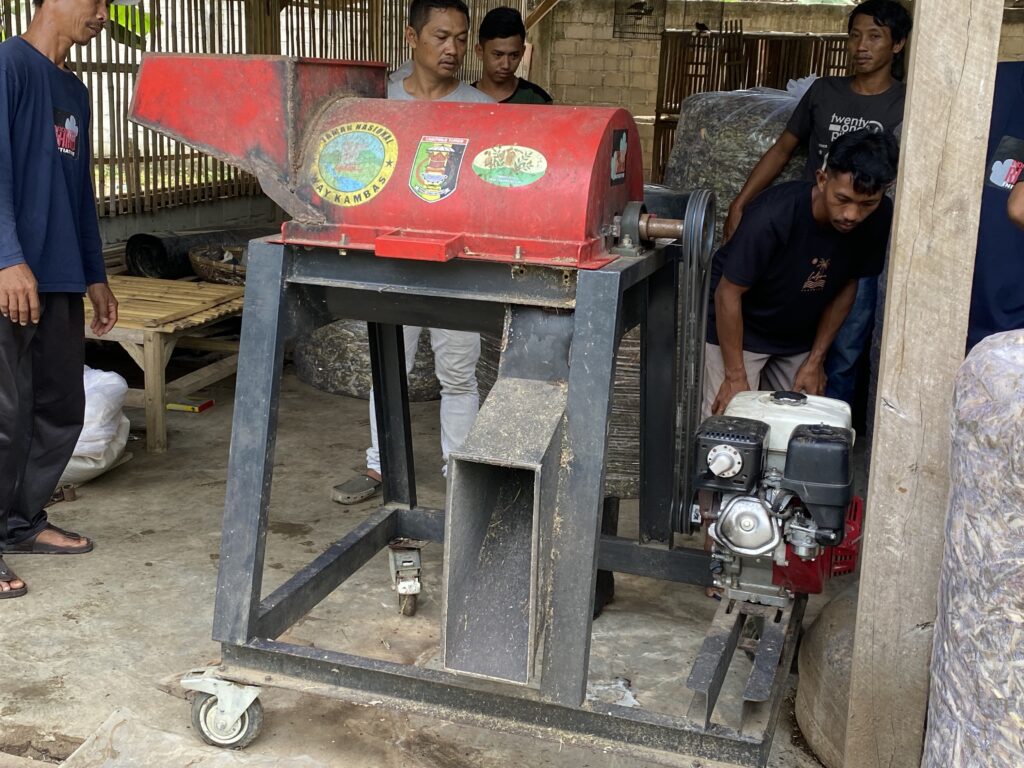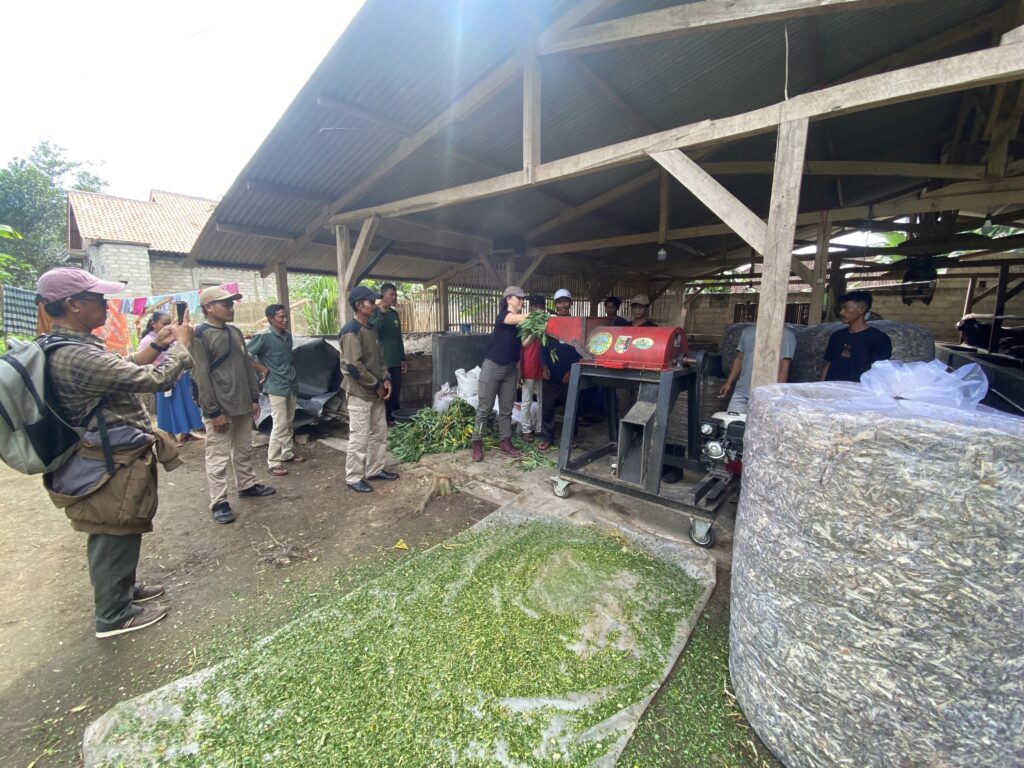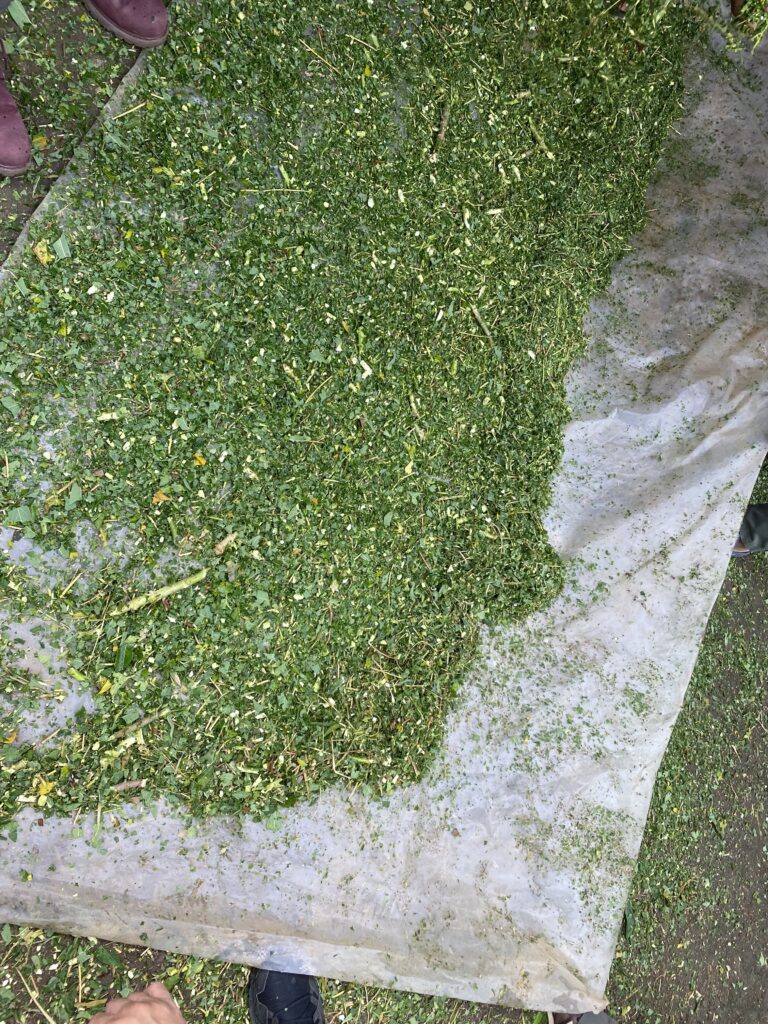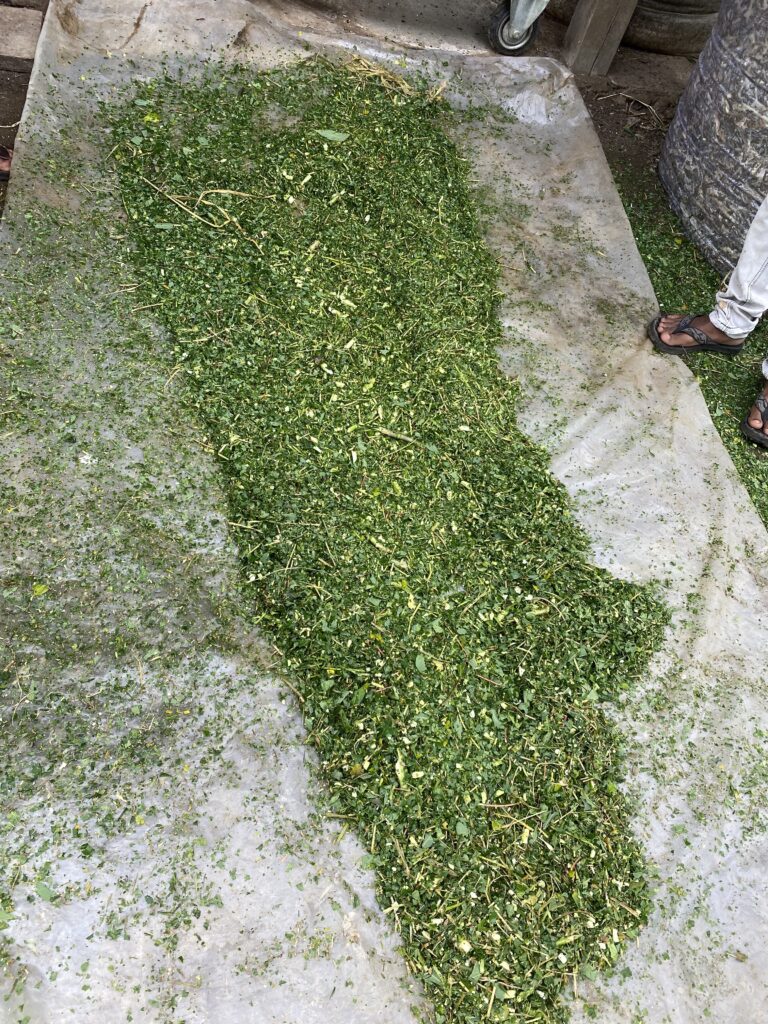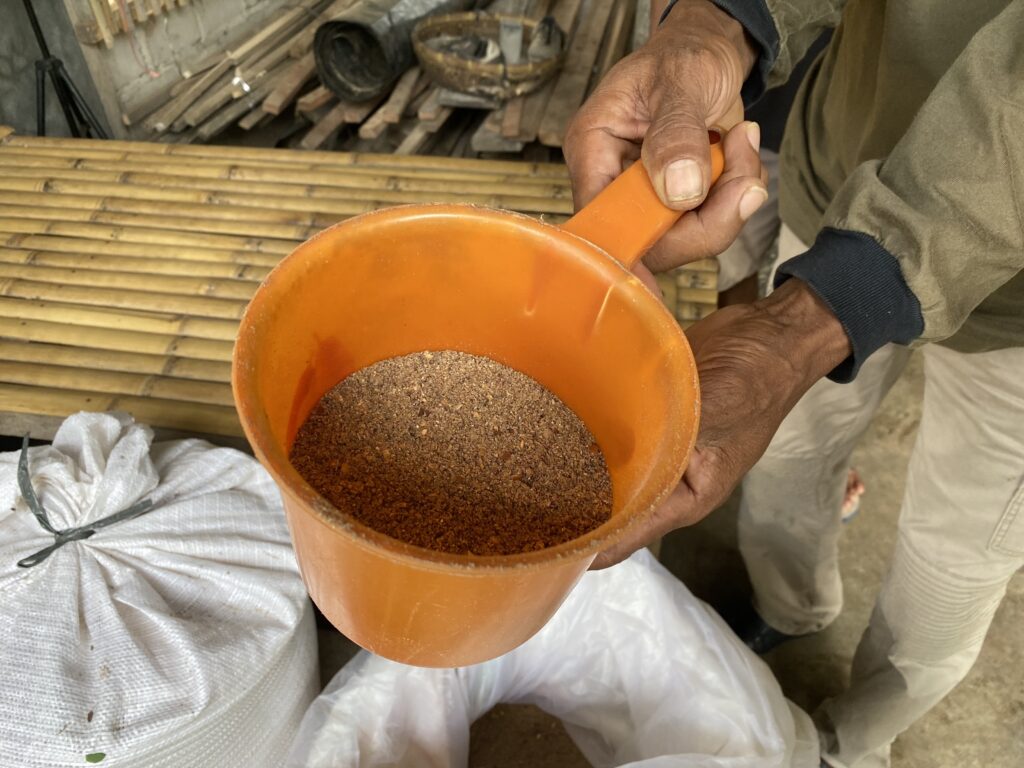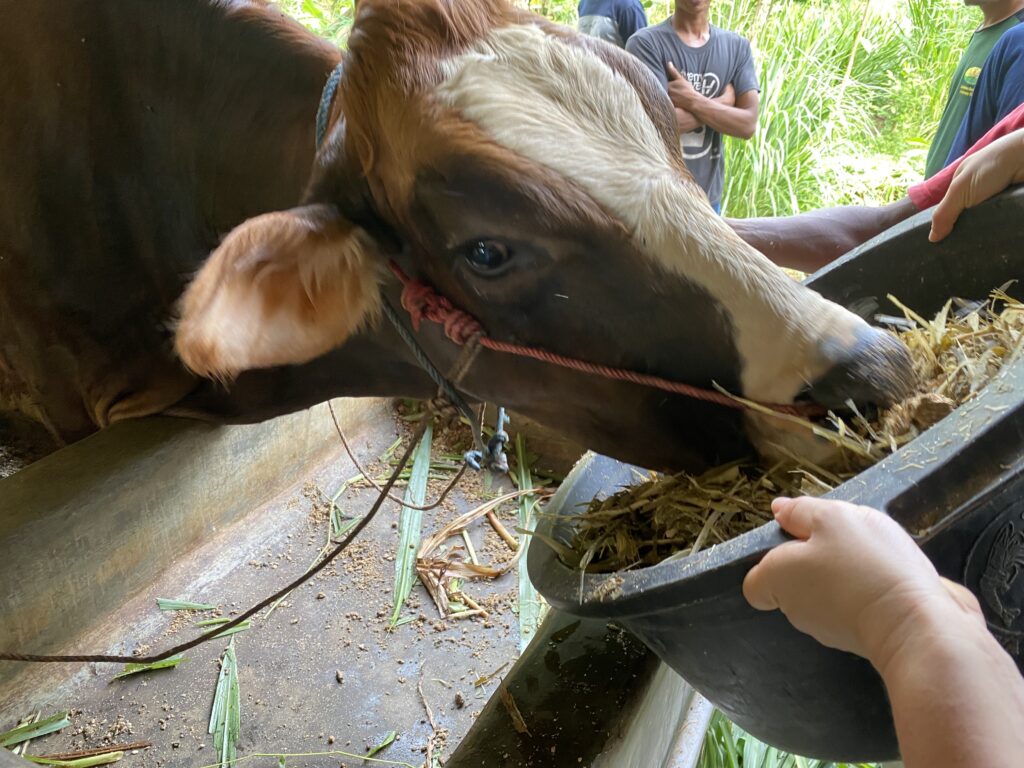My Rhino Road Trip: Seeing Community Development in Action
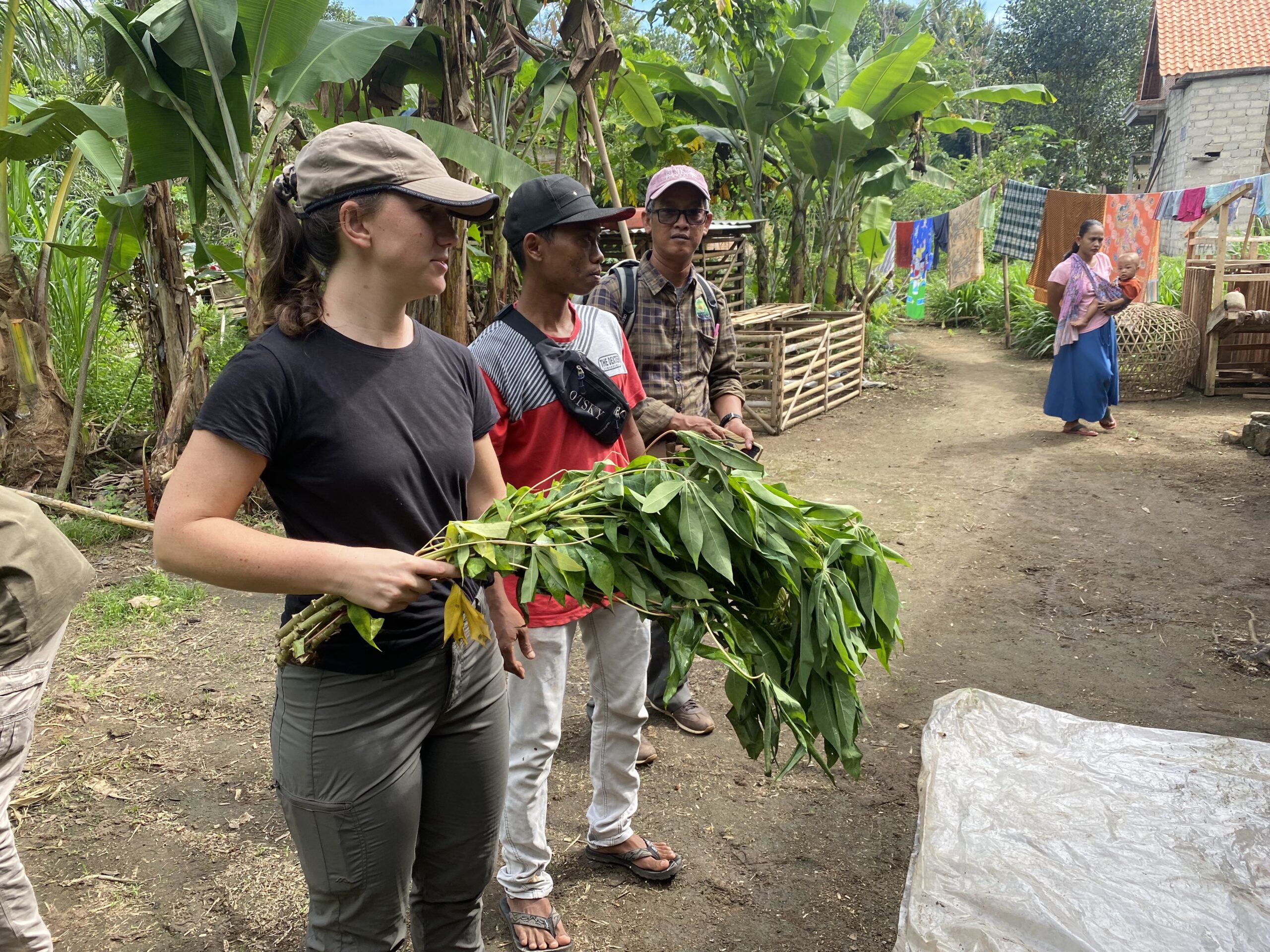
I met Hanif from our partner, Indonesian Rhino Initiative (IRI), at the eco tourism lodge just outside Way Kambas National Park. Our excursion that day was to one of the 38 local villages that surround the park. Hanif was excited to introduce me to residents and show off some of the innovations they had made.
The local villages are key to conservation success in Way Kambas as there is no buffer zone. I joke with Hanif that even though his organization has rhino in the name and logo that his work is all about people. You could see it right away when we arrived. Hanif was greeted warmly and I was welcomed. IRI’s mission is about harmony between people and wildlife.
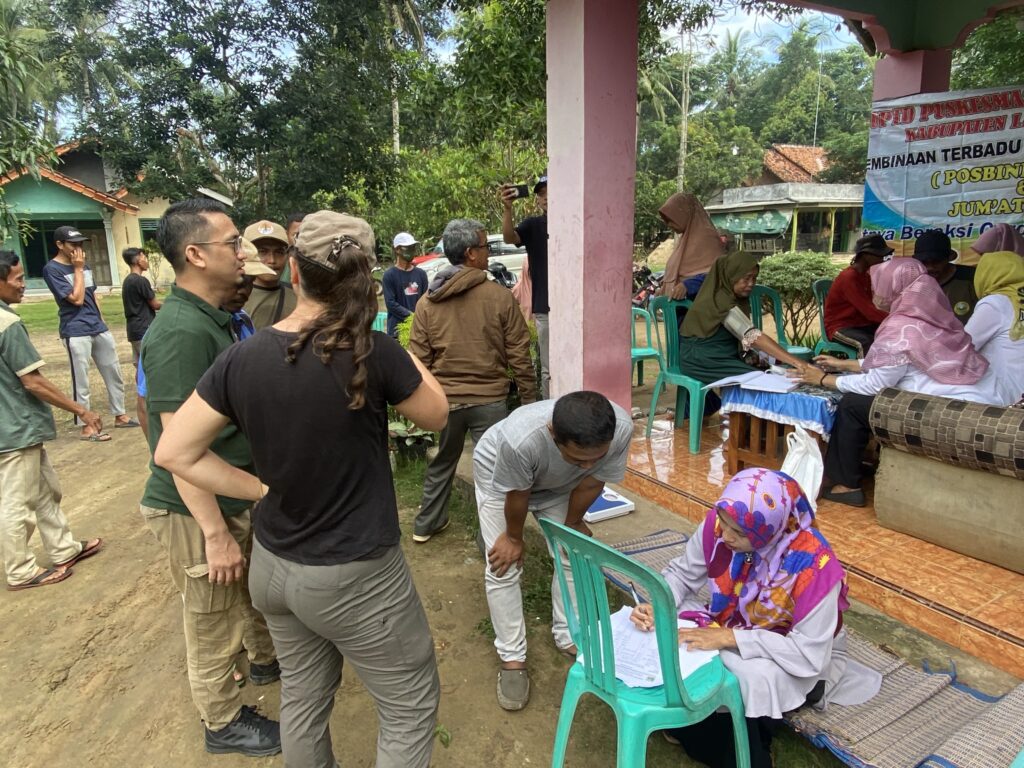
I did not meet any rhinos on this excursion but I did meet some of the resident cows. The farmers grow fields of cassava in this area. The local tapioca factory uses the root, but the leaves and stem of the plant was going to waste. Hanif recognized an opportunity to reuse these materials and worked with an Indonesian company to develop a machine that could grind up the the non-used portion of the cassava plant.
The ground up material is then packed in a drum with some specially formulated microbes and left to ferment over a month. The finished product becomes feed for the cows. It is also healthier than their normal grass diet – the cows are gaining weight thanks to helpful microbes.
I got to try out the machine:
I next visited the orchard and nursery area. This village grows the seedlings for Rawa Kidang (site 2) restoration area. I got to walk through the nursery.
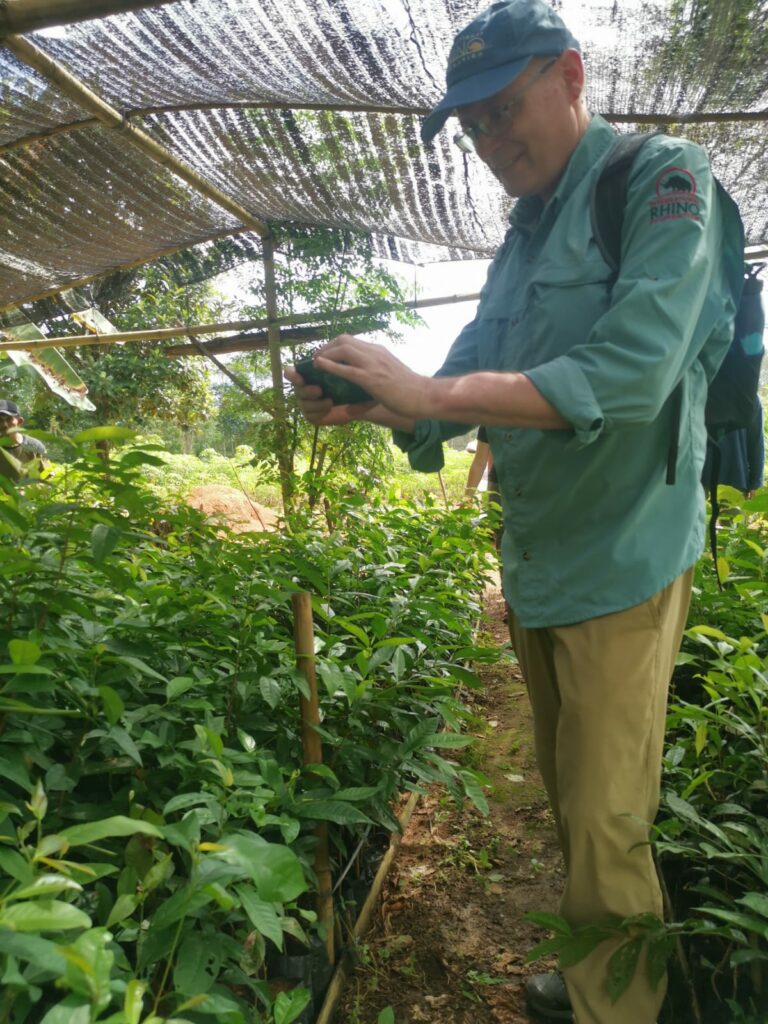
They also grow coconuts in other fruit trees in their orchards as well as raise bees. The area is beautiful and they invited me to join them on the picnic bench for a refresher of fresh coconut water with some of the local honey. It was the perfect drink for a hot afternoon.
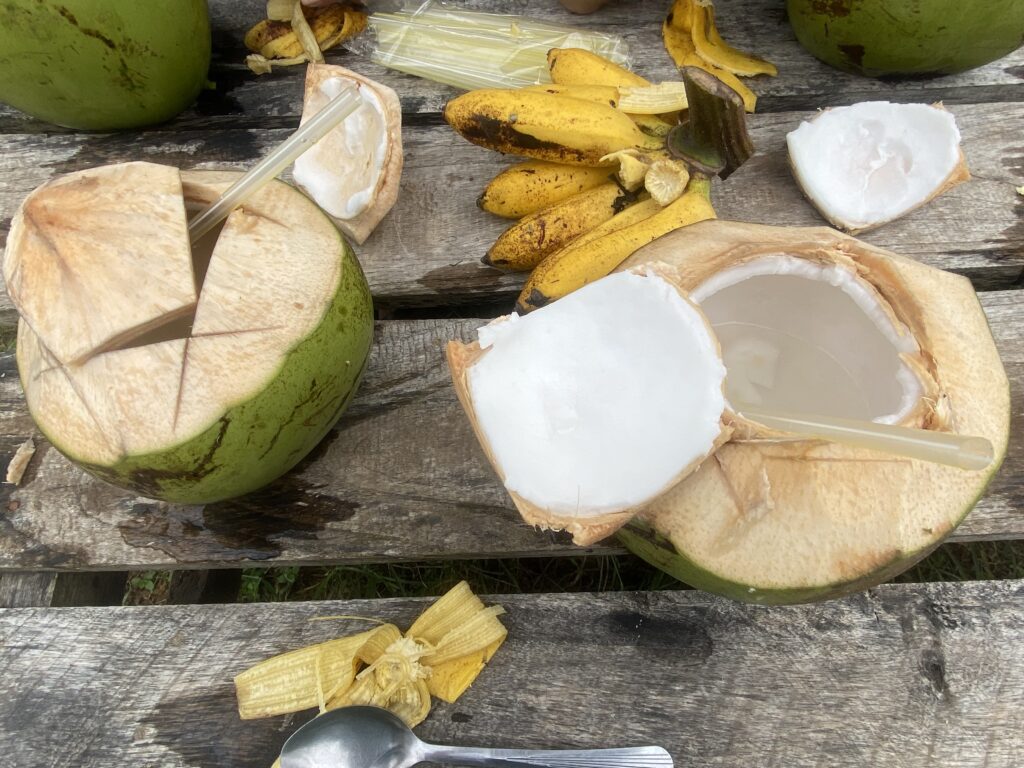
Take a moment to look at this picture:
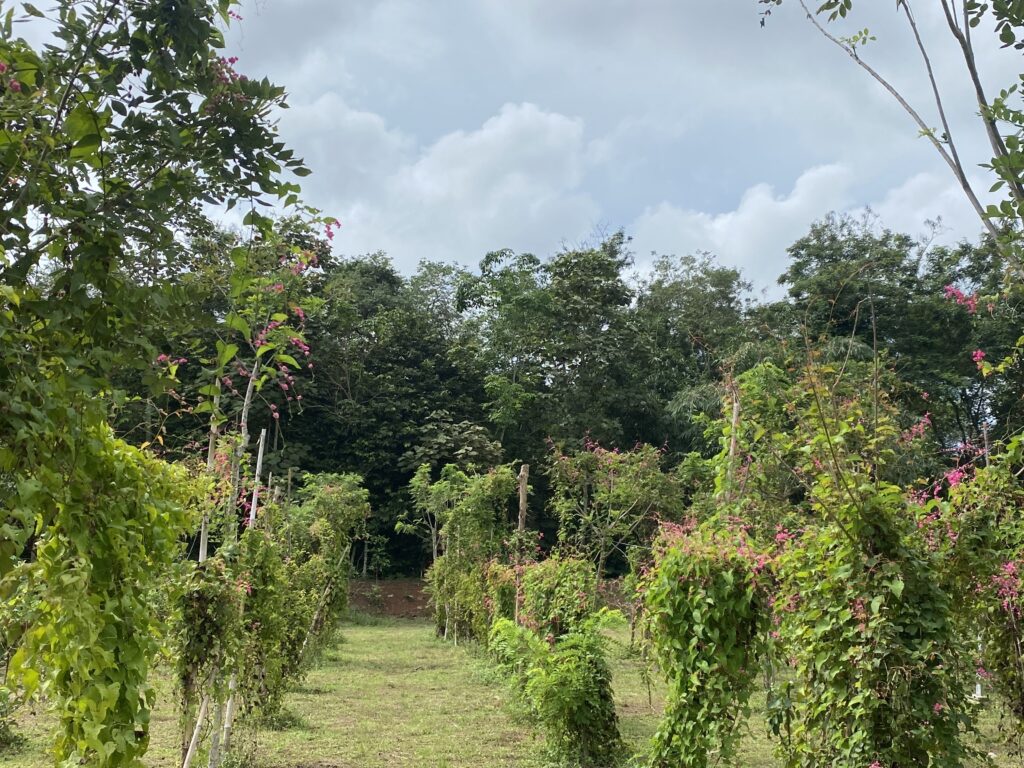
The big trees off in the not-too-far distance is Way Kambas National Park. That is how close the national park is to human settlements. The villagers here are not only receiving an economic benefit from helping to restore the park, but they are also taking an active role in protecting it. They post a 24-hour monitor in this area to prevent illegal entry into the park.
As I strolled through the village, I could see the benefits of community development first-hand. Houses are being remodeled, including some for home stays to invite guests to the same experience I had at the doorstep of an amazing rainforest ecosystem. I also saw roads being improved, community centers erected, and healthcare being improved for residents.
I also noticed a lot of ficus trees growing in the yards at their homes. Hanif said it is another partnership. Ficus trees are beautiful and green and look great. Rhinos also think they are candy. As the trees grow, they are trimmed back and the cuttings are sold to the SRS as food for the eight resident rhinos.
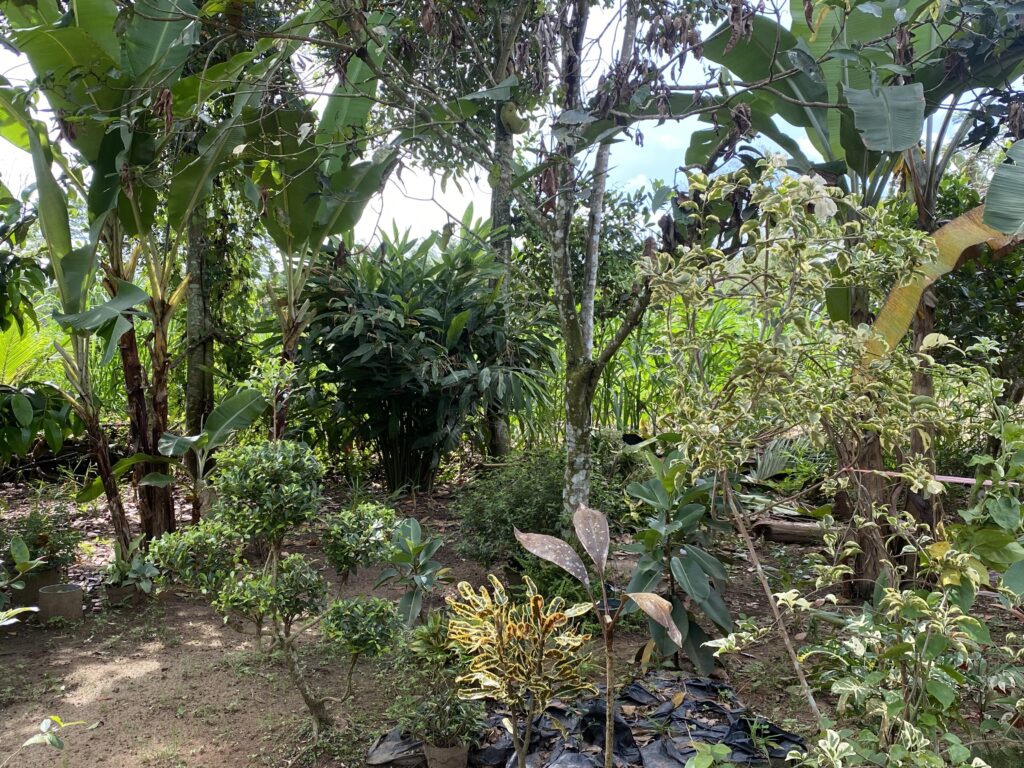
Harmony. Yes, I can say that is what I felt on this excursion. Harmony amongst these great people. Harmony with nature. Harmony demonstrated through sustainable farming and participation in conservation of this national resource. And harmony – well that gives me hope for the future here and everywhere.

